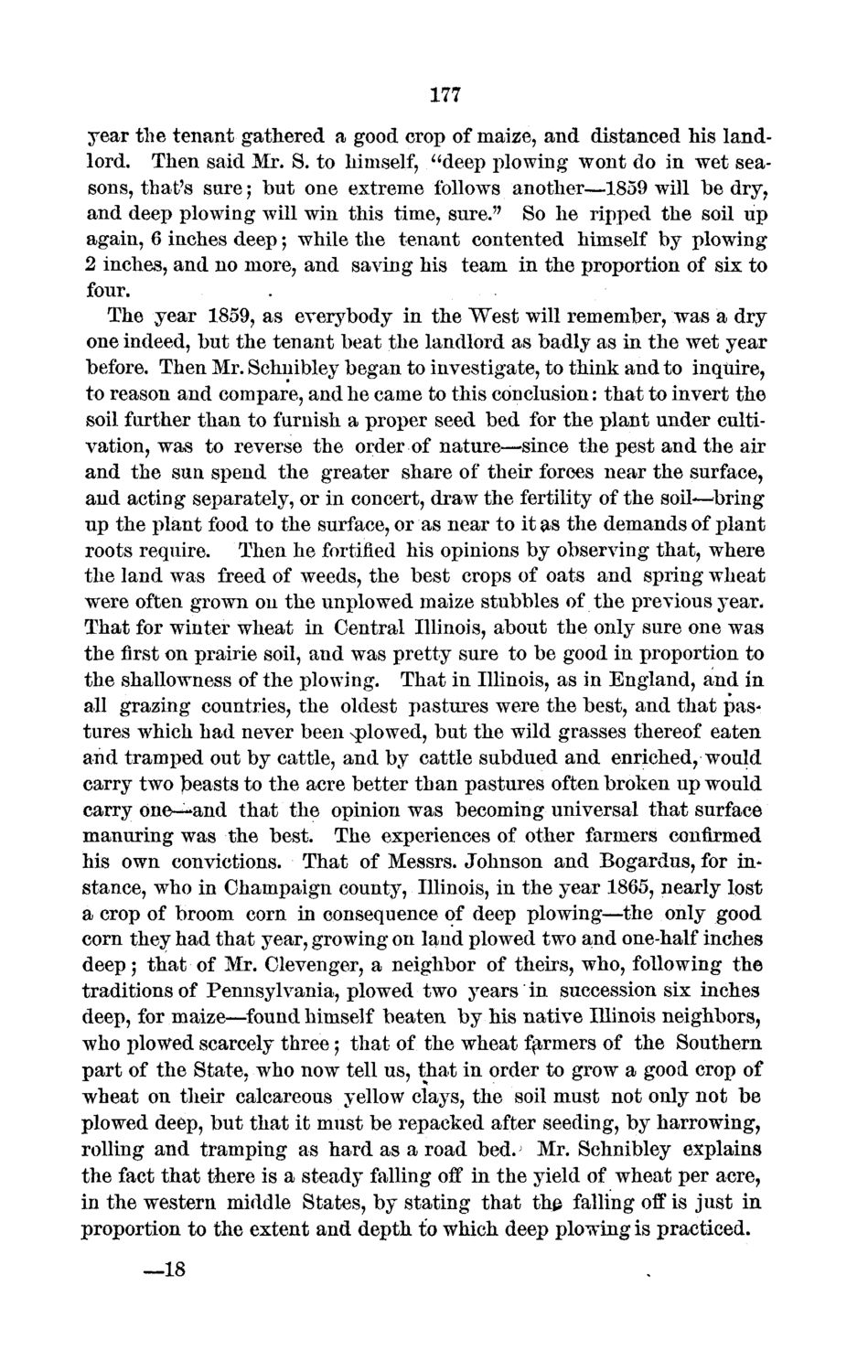| |
| |
Caption: Board of Trustees Minutes - 1872
This is a reduced-resolution page image for fast online browsing.

EXTRACTED TEXT FROM PAGE:
177 year the tenant gathered a good crop of maize, and distanced his landlord. Then said Mr. S. to himself, "deep plowing wont do in wet seasons, that's sure; but one extreme follows another—1859 will be dry, and deep plowing will win this time, sure." So he ripped the soil up again, 6 inches deep; while the tenant contented himself by plowing 2 inches, and no more, and saving his team in the proportion of six to four. . The year 1859, as everybody in the West will remember, was a dry one indeed, but the tenant beat the landlord as badly as in the wet year before. Then Mr. Schnibley began to investigate, to think and to inquire, to reason and compare, and he came to this conclusion: that to invert the soil further than to furnish a proper seed bed for the plant under cultivation, was to reverse the order of nature—since the pest and the air and the sun spend the greater share of their forces near the surface, and acting separately, or in concert, draw the fertility of the soil—bring up the plant food to the surface, or as near to it as the demands of plant roots require. Then he fortified his opinions by observing that, where the land was freed of weeds, the best crops of oats and spring wheat were often grown on the unplowed maize stubbles of the previous year. That for winter wheat in Central Illinois, about the only sure one was the first on prairie soil, and was pretty sure to be good in proportion to the shallowness of the plowing. That in Illinois, as in England, and in all grazing countries, the oldest pastures were the best, and that pastures which had never been vplowed, but the wild grasses thereof eaten and tramped out by cattle, and by cattle subdued and enriched, would carry two beasts to the acre better than pastures often broken up would carry one—and that the opinion was becoming universal that surface manuring was the best. The experiences of other farmers confirmed his own convictions. That of Messrs. Johnson and Bogardus, for in* stance, who in Champaign county, Illinois, in the year 1865, nearly lost a crop of broom corn in consequence of deep plowing—the only good corn they had that year, growing on land plowed two and one-half inches deep 5 that of Mr. Clevenger, a neighbor of theirs, who, following the traditions of Pennsylvania, plowed two years in succession six inches deep, for maize—found himself beaten by his native Illinois neighbors, who plowed scarcely three; that of the wheat farmers of the Southern part of the State, who now tell us, that in order to grow a good crop of wheat on their calcareous yellow clays, the soil must not only not be plowed deep, but that it must be repacked after seeding, by harrowing, rolling and tramping as hard as a road bed. Mr. Schnibley explains the fact that there is a steady falling off in the yield of wheat per acre, in the western middle States, by stating that the falling off is just in proportion to the extent and depth to which deep plowing is practiced. —18
| |